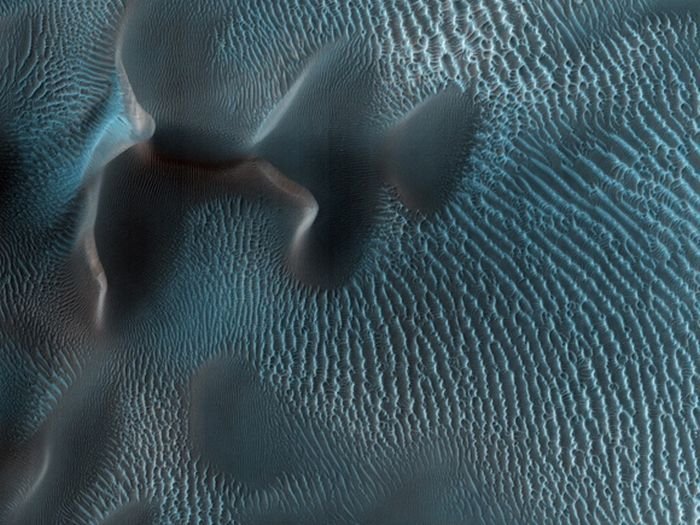|
|
Mars Surface
|
• Noachian period (named after Noachis Terra): Formation of the oldest extant surfaces of Mars, 4.5 billion years ago to 3.5 billion years ago. Noachian age surfaces are scarred by many large impact craters. The Tharsis bulge, a volcanic upland, is thought to have formed during this period, with extensive flooding by liquid water late in the period.
• Hesperian period (named after Hesperia Planum): 3.5 billion years ago to 2.9–3.3 billion years ago. The Hesperian period is marked by the formation of extensive lava plains.
• Amazonian period (named after Amazonis Planitia): 2.9–3.3 Gyr ago billion years ago to present. Amazonian regions have few meteorite impact craters, but are otherwise quite varied. Olympus Mons formed during this period, along with lava flows elsewhere on Mars.
Some geological activity is still taking place on Mars. The Athabasca Valles is home to sheet-like lava flows up to about 200 Mya. Water flows in the grabens called the Cerberus Fossae occurred less than 20 Mya, indicating equally recent volcanic intrusions. On February 19, 2008, images from the Mars Reconnaissance Orbiter showed evidence of an avalanche from a 700 m high cliff.
|
|









